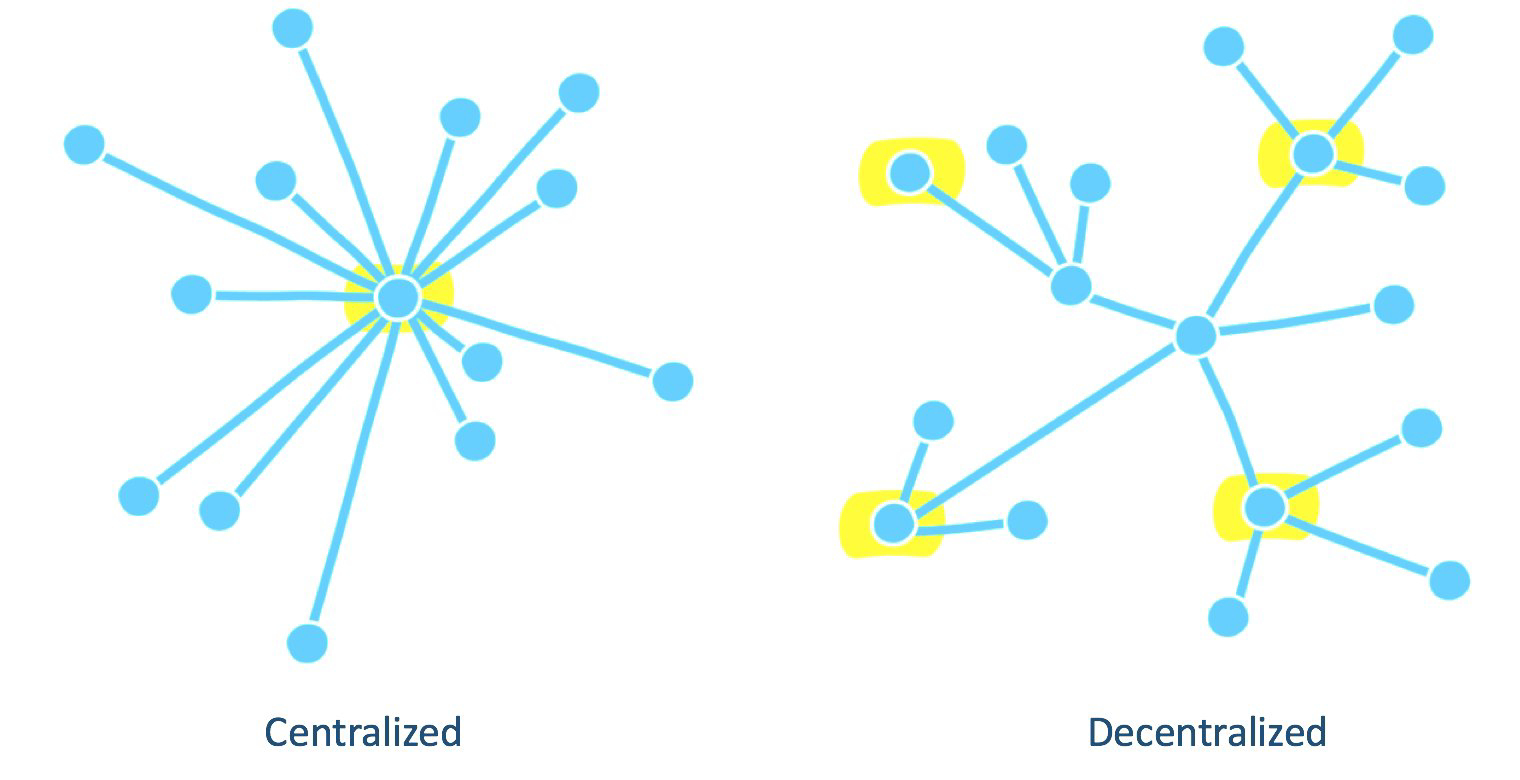What is the difference between a centralized and decentralized blockchain?
network, anyone can
transact on the ledger.
Bitcoin’s network uses
mining and proof-of-
work to maintain the
integrity of the ledger.
In a centralized
network, only known
and identified parties
can transact on the
ledger. Therefore, their
transactions can be
audited.
A blockchain can be either centralized or decentralized. It
is important, however, that decentralized not be confused
with distributed. While a blockchain is inherently distributed
(meaning that many parties hold copies of the ledger), it is
not inherently decentralized.
Whether a blockchain is centralized or decentralized
simply refers to the rights of participants on the ledger, and
is therefore a question of design.
In a decentralized network, anyone can participate and
transact on the ledger. As a result, mechanisms must exist
in order to combat the vulnerabilities that arise from this
design and to ensure that transactions are correct. Bitcoin,
for example, is a decentralized blockchain that uses
mining and proof-of-work* to maintain the integrity of the
ledger and to prevent people from corrupting the system.
A centralized network, on the other hand, is made up of
parties whose identities are known. Thus, the system is valid
because only credible and reputable participants can
post to the ledger. Because participants’ identities are
Ultimately, a centralized distributed ledger
should be used in any highly regulated
industry - such as financial services - to
minimize vulnerability. While both
decentralized and centralized blockchains
have respective risks, a centralized network
is much preferred for our purposes in that
the identity of participants is known and, as
a result, an audit trail exists should an actor
attempt to corrupt the system. It is
preferable, for example, to fine a known
entity that entered an invalid transaction
rather than attempt to account for every
possible manipulation that could
potentially occur in an anonymous,
decentralized network.
Balancing centralization and decentralization is often one of the key issues in the design of organizational structures. A number of lead questions can help you start the conversation about what should be done centrally and which activities, deliverables and decisions should be allocated to decentral units
*Proof-of-work: a function to deter denial
of service attacks and other potential
spam on a network by requiring some level
of work that is usually costly and time-
consuming. In the Bitcoin network, miners
must complete a proof-of-work in order to
regulate the rate at which new blocks are
generated
Source :-Blockchain
Byte
The Blockchain Byte features a question from the
distributed ledger space
R3 Research
Emily Rutland





Comments
Post a Comment